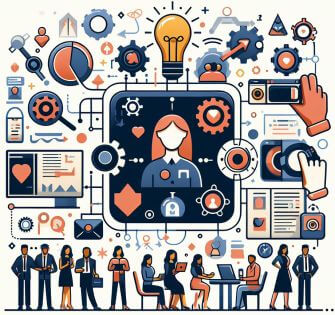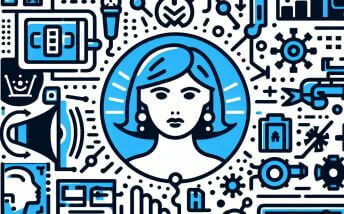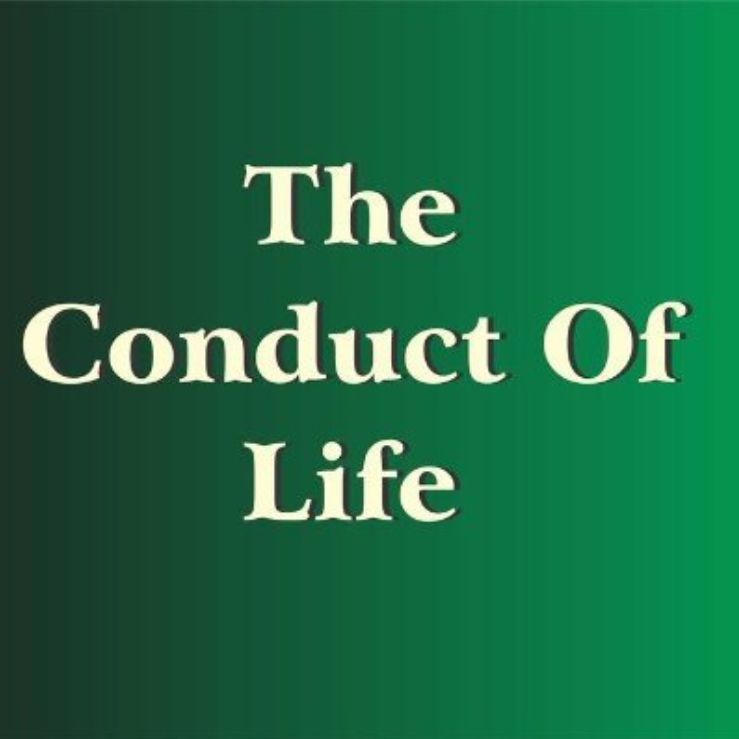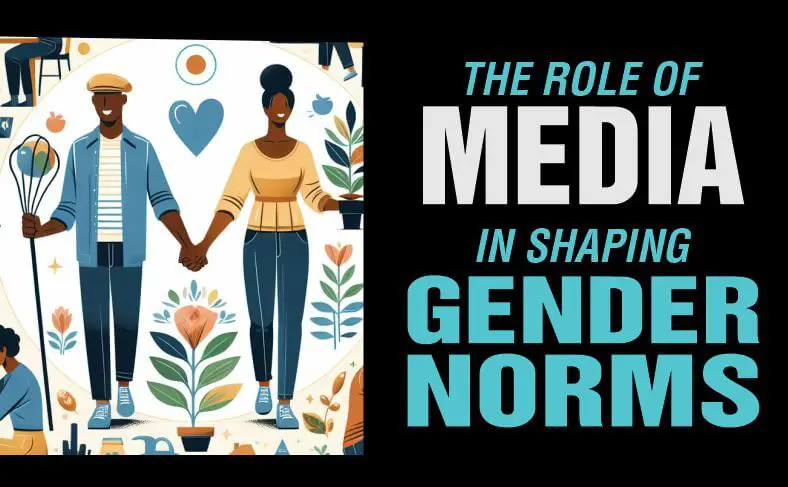Last updated on February 1st, 2024 at 05:46 am
Explore the role of media in shaping gender norms and the responsibility of media in shaping attitudes towards gender equality.
Media serves as a powerful tool in shaping societal perceptions and beliefs.
Throughout history, it has played a significant role in constructing and reinforcing gender norms.
From television shows and films to advertising, news, and social media, media has a measurable impact on the way gender is understood and the expectations associated with masculinity and femininity.
This article explores the role of media in shaping gender norms, the implications of such influences, and potential strategies for promoting gender equality.
Table of Contents
- Gender Representation in Television and Films
- Advertisements and Marketing Strategies
- News Media’s Influence on Gender Norms
- Social Media’s Impact on Gender Norms
- Role Of Media In Shaping Gender Norms Towards Inclusivity
- Frequently Asked Questions
- Final Thought
Gender Representation in Television and Films

Television shows and films are influential platforms for the dissemination of cultural norms and values.
They contribute to the construction of gender identity by portraying certain behaviours, roles, and expectations as appropriate for men and women.
Traditionally, women have frequently been depicted as passive, emotional, and dependent characters, while men are often portrayed as strong, rational, and autonomous.
These representations perpetuate stereotypical notions of masculinity and femininity, which can limit diverse representations and reinforce harmful gender norms.
Related: The Origins of Gender Stereotypes
Gender Role in Movies
For example, the television show “Mad Men” presents a nostalgic and glamorized image of the 1960s, emphasizing the traditional gender roles of the era.
Female characters, such as Betty Draper, are primarily portrayed as housewives whose main concerns revolve around their appearances and marital status.
Male characters, like Don Draper, are depicted as strong, successful, and dominating figures.
Such portrayals contribute to the reinforcement of gender inequalities by limiting the aspirations and possibilities available to individuals who do not fit within these narrow molds.
Similarly, the film industry often perpetuates harmful gender norms.
Action movies frequently present male protagonists as physically strong and heroic, while female characters are often objectified for their appearance and sexualized roles.
This perpetuates the belief that women should primarily exist for the pleasure and gaze of men.
These limited portrayals can impact how individuals perceive their own gender identity and the expectations placed upon them.
Related: Balancing Biblical Gender Roles in Modern Society
Advertisements and Marketing Strategies

Advertising is a powerful medium that shapes societal attitudes and aspirations.
Gender norms are often reinforced through advertising by promoting rigid beauty ideals, conventional gender roles, and reinforcing binary notions of gender.
Advertisements can further perpetuate stereotypical gender norms by presenting women as sex objects, emphasizing their physical attractiveness to sell products, and promoting the idealized image of a “perfect” female body.
On the other hand, men are often portrayed as strong, successful, and dominant figures, reinforcing traditional masculine norms.
Related: Impact of Gender Norms on Individuals
Example of Advertising Shaping Gender Norms
For instance, cosmetic advertisements often depict women with flawless skin, thin bodies, and perfect hair, creating unrealistic beauty standards that can negatively impact self-esteem and body image.
Similarly, advertisements for children’s toys often reinforce gender stereotypes by portraying girls playing with dolls and pink toys, while boys engage in activities associated with strength, aggression, and leadership.
These messages limit not only children’s imagination but also their understanding of acceptable gender behaviors and interests.
News Media’s Influence on Gender Norms

News media plays a significant role in shaping societal perceptions of gender norms.
The representation of gender in news reporting can influence public opinion, reinforce stereotypes, and perpetuate gender inequalities.
Research has consistently shown that women are systematically underrepresented in the news media, both as reporters and as subjects of news coverage.
This underrepresentation contributes to the marginalization of women’s voices and limits their influence in shaping public opinion.
Furthermore, the language used in news reporting can reinforce gender stereotypes.
For instance, women may be described using derogatory terms or highlighting their appearance, while men are often praised for their achievements or expertise.
This contributes to the perception that women are valued primarily for their appearance rather than their accomplishments or expertise.
Such portrayals hinder the progress of gender equality by reinforcing rigid expectations and inhibiting women’s full participation in public life.
Social Media’s Impact on Gender Norms

The rise of social media has further amplified media’s influence on shaping gender norms.
Platforms such as Instagram, Facebook, and Twitter provide individuals with opportunities to create and share content that can either challenge or perpetuate traditional gender norms.
Social media allows for the creation of alternative narratives and the amplification of diverse voices.
However, it also exposes users to an overwhelming amount of content that may reinforce gender stereotypes or lead to harmful comparisons and self-esteem issues.
How Social Media Shapes Gender Norms
For instance, social media is often criticized for promoting an idealized and unattainable image of femininity, perpetuating beauty standards, and fueling body dissatisfaction.
Influencers, celebrities, and filters contribute to the construction of an image-centered culture, where users are pressured to present a curated version of themselves that aligns with mainstream beauty ideals.
Likewise, toxic masculinity can be reinforced through viral content that normalizes aggressive behavior, objectification of women, or dismisses emotions as weak.
Role Of Media In Shaping Gender Norms Towards Inclusivity
While media plays a significant role in shaping gender norms, it also has the potential to promote gender equality and challenge harmful stereotypes.
Industry professionals, content creators, and consumers all have a role to play in encouraging equitable media representation.
Let’s take a closer look:
Promoting gender equality through media is the act of using various forms of media, such as television, film, advertising, and social media, to challenge and change traditional gender roles and stereotypes.
The goal is to create a more inclusive and equal society by portraying women and men in diverse and non-stereotypical ways.
The media plays a significant role in shaping society’s perceptions and attitudes towards gender.
This can be achieved in several ways:
1. Representation
Media should strive to represent a variety of women and men in diverse roles and occupations.
This includes showcasing women in leadership positions, in non-traditional careers, and with a range of physical appearances and abilities.
It also includes portraying men as caring, nurturing, and emotionally expressive, countering the stereotype of the emotionally distant “macho man.”
2. Avoiding Stereotypes
Media should avoid reinforcing harmful gender stereotypes.
This means not portraying women as overly sexualized objects or emphasizing their physical appearance over their abilities.
It also means challenging the portrayal of men as always strong, dominant, and in control.
3. Storytelling
Media has a powerful ability to tell stories and shape narratives.
By featuring storylines that challenge gender stereotypes, media can educate and inspire viewers.
These stories can include strong female characters who overcome obstacles and demonstrate resilience and independence, as well as male characters who display vulnerability and emotional intelligence.
4. Advertising
Advertisements have a significant influence on shaping societal norms and beliefs.
Promoting gender equality through media means creating advertisements that avoid reinforcing harmful stereotypes.
Advertisements should promote inclusivity, respect, and equality, rather than objectifying or reducing individuals to their gender roles.
5. Social Media Campaigns
Social media platforms provide an opportunity for individuals, organizations, and movements to promote gender equality directly.
Hashtags and campaigns can raise awareness, challenge harmful narratives, and share diverse perspectives on gender.
Frequently Asked Questions
How does media influence gender norms?
Media shapes gender norms by portraying stereotypes, reinforcing traditional roles, or challenging norms through diverse and empowering representations.
Can media help break gender stereotypes?
Yes, media can break stereotypes by showcasing diverse gender roles, promoting gender equality, and challenging traditional norms through positive representation.
What responsibility does media have in shaping gender norms?
Media has a responsibility to portray diverse and empowering representations of gender, challenge stereotypes, and promote gender equality and inclusivity.
How can individuals contribute to changing gender norms in media?
Individuals can support media that promotes gender equality, advocate for diverse representation, and engage in discussions to raise awareness and challenge stereotypes.
Final Thought
The media wields significant influence in shaping societal perceptions of gender norms.
By portraying diverse and empowering representations of gender, the media can challenge stereotypes, promote inclusivity, and contribute to the advancement of gender equality.
It is crucial for media platforms to recognize their responsibility in shaping attitudes and behaviours, and to actively work towards encouraging a more equitable and inclusive society.
Through conscious and positive portrayal, the media can be a powerful force for societal change and progress.
References:
- https://www1.udel.edu/comm245/readings/GenderedMedia.pdf
- https://issuu.com/benedictcusack1/docs/the_influence_of_mass_media_on_gender_roles_and_st
- https://www.ukessays.com/essays/media/the-role-of-mass-media-in-the-development-media-essay.php
Pyo Merez (PsyD) is a distinguished adolescent and adult psychologist at the forefront of mental health advocacy.
With expertise in cognitive and developmental psychology, focusing on social relationships, cultural contexts, and individual differences, Pyo has dedicated his career to empowering adolescents and adults.
As a sought-after speaker and panelist, Pyo shares invaluable insights on issues affecting young people, contributing to a deeper understanding of mental health and well-being in today's society.


